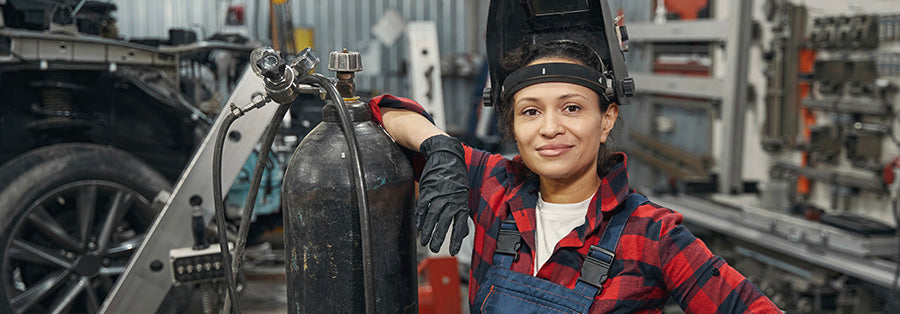Within the world of welding, there are a massive amount of options as far as which process you can use – everything from cold welding in the vacuum of space to laser welding. But by far, the main trinity of most common welding methods are TIG, MIG and stick. While stick requires less initial equipment, MIG is generally considered one of the best processes to begin with as it’s easy to pick up while also offering a lot of room to grow. In this article, we’ll cover everything you need to know about MIG welding.
How Does MIG Welding Work?
Metal inert gas (MIG) welding works by feeding a continuous solid wire electrode and inert shield gas through a welding gun. This process produces an electric arc that melts both the metal wire and target material, fusing the weld together.
What is Needed for MIG Welding?

Getting Started
Like all welding methods, it’s important to dress in welding-safe apparel and work away from any potential fire hazards. Make sure your metal is clean and free from rust and impurities as contaminates will compromise your weld. Once you’ve prepped your space and cleaned your piece, you’re ready to get started.
Here’s what the process looks like:
Set up your welding machine: It’s important to adjust your welding settings based on the metal thickness, wire diameter and type of shielding gas. Any machine from a reputable brand (the only ones we offer here at Welding Supplies from IOC) will have a reference chart available to show you what these settings should be.
Install the welding wire and insert the electrode: Load your welding wire into the feeder and make sure it’s properly aligned in the gun.
Select the right shielding gas: Choose your shielding gas based on the material you’re welding. Argon and carbon dioxide are the most common gasses used for MIG welding.
Initiate the arc: By pulling the trigger, you initiate the electrical arc which will then melt the materials. Make sure to keep a steady hand while adjusting the angle and travel speed to achieve your specific welding goals.
Benefits of MIG Welding
- The straightforward process makes it an easy-to-learn skill.
- The speed of the continuous fed wire makes it both efficient and productive. Compared to some other welding processes, MIG is basically Jeff Gordon.
- It is one of the most cost-effective welding methods over time.
- Compared to most stick welding, MIG produces less slag and spatter making for cleaner welds.
MIG Applications
MIG welding is a popular application used in many different industries and projects. For example, the automotive industry may use it for manufacturing vehicle frames or completing body repairs. The construction industry commonly uses it for fabricating steel frames or pipelines. However, the practice does not limit itself to just commercial welders. Many hobbyists will use MIG welding to create sculptures, furniture or decor.
Whether you're an experienced welder or a DIY enthusiast, MIG welding is an excellent option for any project. Its versatility, efficiency and clean welds create durable and precise joints. To get the best prices and service on all your MIG welding consumables and equipment, be sure to visit Welding Supplies from IOC first!





